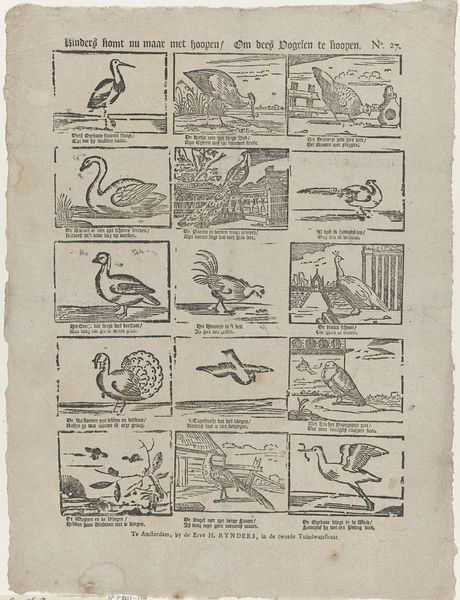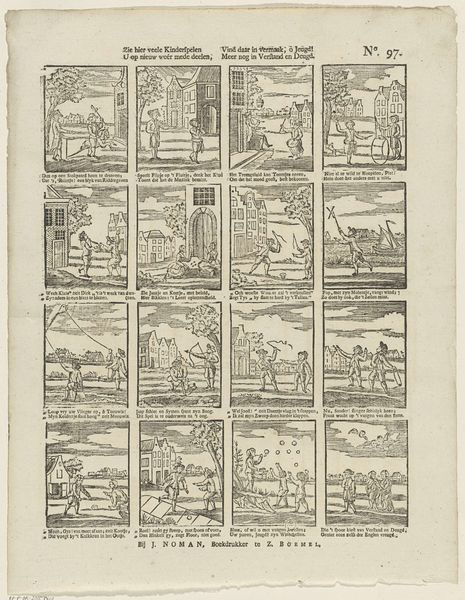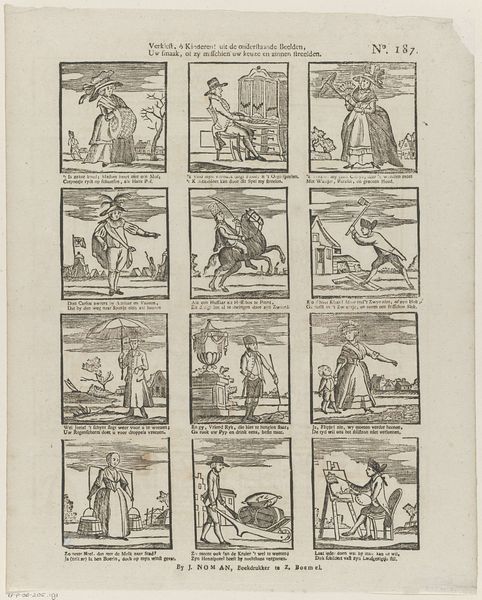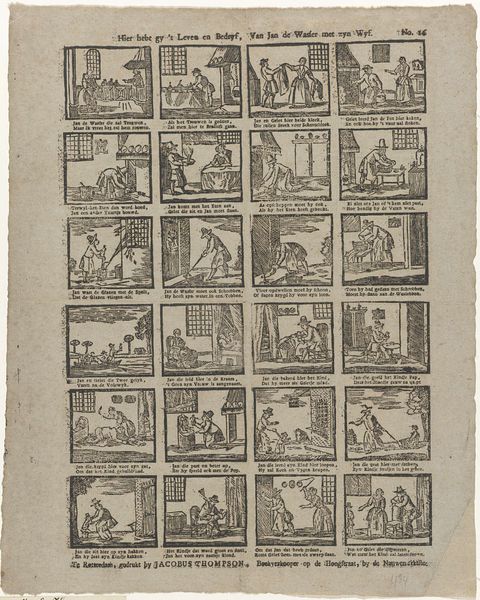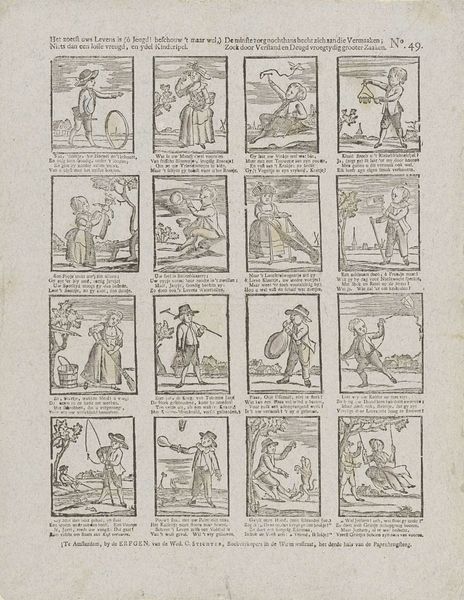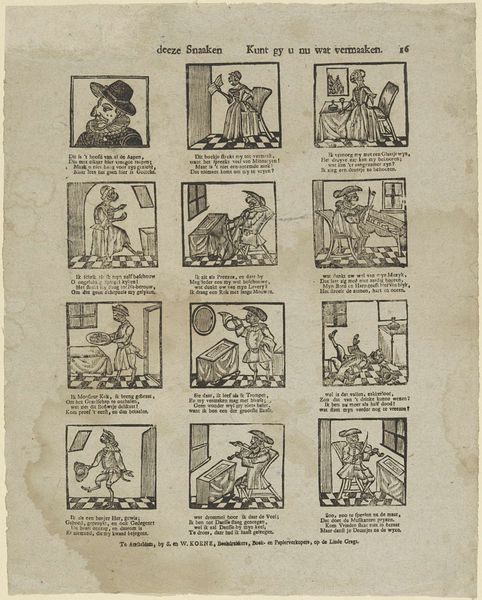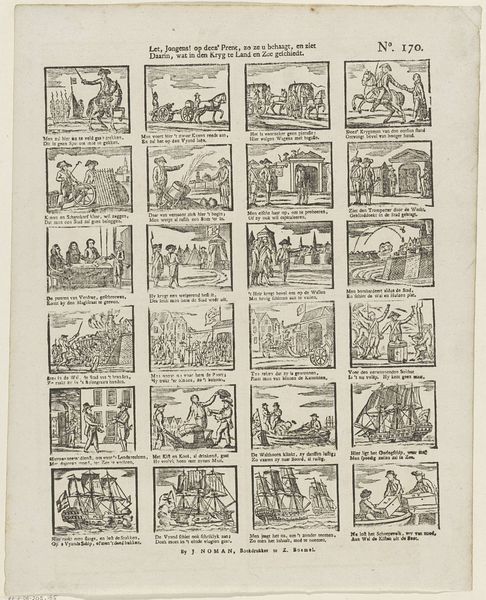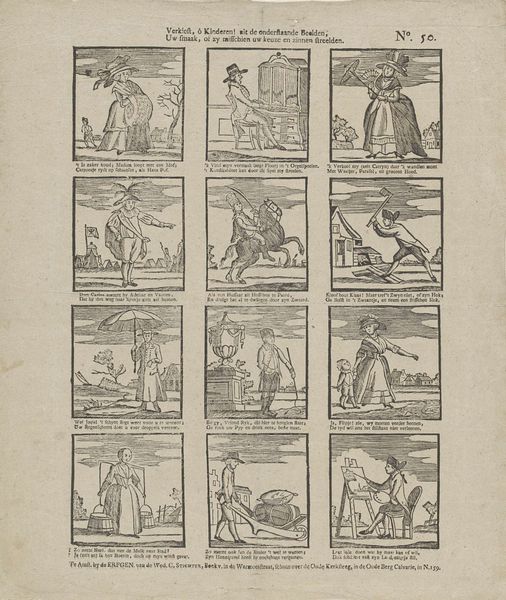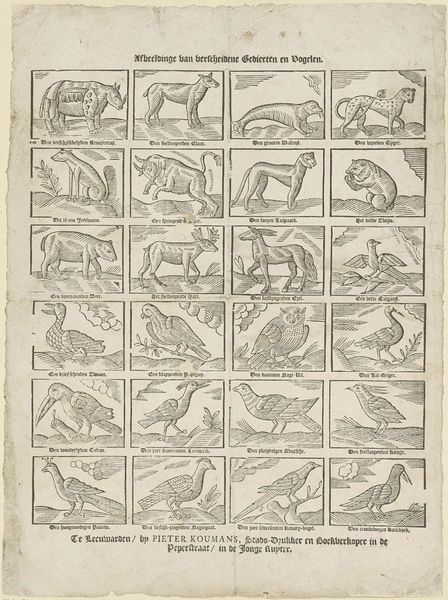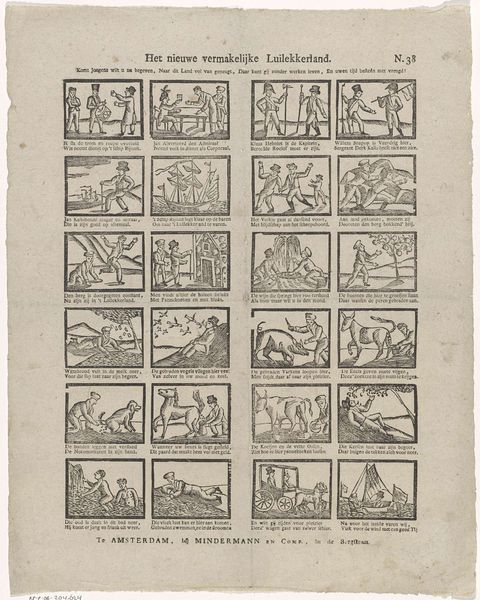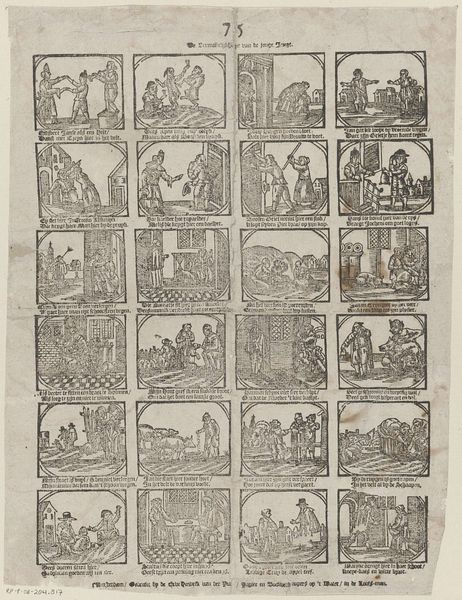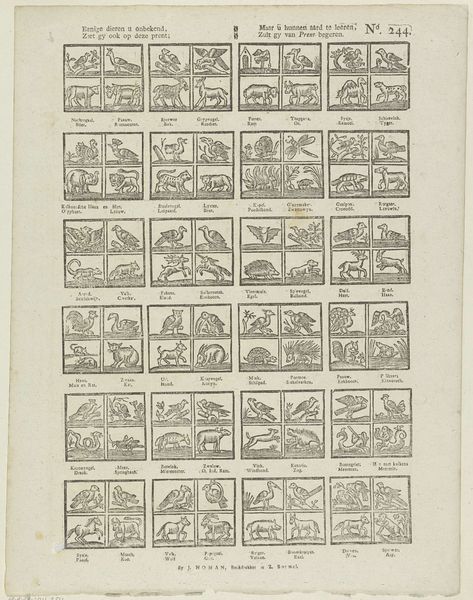
'T is jeugd, om uw gezigt te streelen, / En 't aangenaame meê te deelen, / Dat ge in het vooglen-perk hier ziet. / Schuw 't kwaade en haat het goede niet 1715 - 1813
0:00
0:00
Dimensions: height 400 mm, width 324 mm
Copyright: Rijks Museum: Open Domain
This print, made by Erven weduwe Cornelis Stichter, presents a series of twelve vignettes, each depicting a different bird within a landscape or domestic setting. The Dutch Golden Age, from which this print likely originates, saw an explosion of interest in naturalism and scientific observation. Here, however, the aviary serves a didactic purpose. Each bird, accompanied by a moralizing verse, invites the viewer to contemplate virtues and vices. The rooster, for example, might symbolize vigilance, while other birds could represent freedom, greed, or domesticity. The institutional context is also important. Stichter's bookshop, located on the Rokkin in Amsterdam, was part of a thriving print culture. These images weren't just aesthetic objects; they were tools for shaping social behavior. To understand this print more deeply, we can look at emblem books, popular during this period, which combined images and text to convey moral lessons. Considering the social history of childhood and education in the Dutch Republic might reveal how such prints were used to instill specific values in young people.
Comments
No comments
Be the first to comment and join the conversation on the ultimate creative platform.
